Shefqet Avdush Emini at DreamWorks Gallery – A Star of Expressive Abstraction
In this photograph taken during the exhibition at DreamWorks Art Gallery, we see the renowned master of contemporary painting, Shefqet Avdush Emini, beside three of his abstract works that embody the essence of his artistic philosophy: an explosive fusion of emotions, colors, and spiritual dynamics. As a distinguished figure in the international contemporary art scene, Shefqet has dedicated his life to an inner aesthetic quest, transcending traditional boundaries of form and content to create a new reality – a universe where color and structure represent feelings, memories, traumas, and shared human triumphs.
The Artist’s Portrait – A Calm Spirit in an Explosive Universe of Colors
In the upper left corner of the photograph, the artist appears calm and focused, with a deep, reflective gaze that seems to look beyond visible reality. With his characteristic hat and stylized beard, Shefqet looks like a poet of colors, a man who communicates with the world through canvas and pigment. His presence before the artworks is more than physical – he is one with his creations, for they emerge from the depths of his artistic soul.
Painting 1 (top right) – A Metaphor of a Blazing Landscape
This painting stands out for the dramatic contrast between a turbulent sky in deep shades of blue and an eruption of red and white in the lower part. The colors clash in a composition resembling a disturbed landscape or a bloody memory. The white that runs through the middle of the work seems like pure energy seeking release from chaos. This painting can be read as a reflection on the inner struggle of man, confronting pain and searching for hope in darkness.
Painting 2 (bottom left) – The Symphony of the Moving Spirit
In this composition, the artist uses a palette of vivid colors – blue, yellow, orange, and white – to create a work that feels like an outburst of liberated emotions. Expressive strokes and intersecting lines give the sensation of an internal explosion, similar to emotional experiences bursting forth without warning. The dominant blue gives the canvas a meditative character, while red and orange provoke the viewer with dramatic tension. This painting speaks of the soul’s journey toward self-understanding and facing the forces that shape the human being.
Painting 3 (bottom right) – The Landscape of Subconscious Memory
The third presented work is an emotional landscape resembling a distant land made up of scattered threads of memories. The colors are more concentrated and balanced – calm blue, nature-like green, and dark red appearing like wounds or signals. The composition is quieter but no less powerful. It carries a clear message: even calmness is explosive when it holds silent passions inside. The work feels like an inner call to explore the deepest layers of human memory.
Shefqet Avdush Emini – A Spiritual Traveler in the World of Art
Through these three paintings, it becomes clear that Shefqet Avdush Emini is not just an artist – he is an explorer of the uncharted territories of the human soul. His work is a kind of meditation described with color, where every brushstroke on the canvas is a call to listen to our inner selves. In his art, there are no easy solutions or straight paths – every piece is an emotional labyrinth that requires courage to face.
DreamWorks Art Gallery has made a brilliant choice in presenting this master of contemporary art, who continues to inspire, challenge, and transform how we perceive the world and ourselves through the magical power of painting.
Shefqet Avdush Emini – Under the Rays of Abstract Expressionism: A Spiritual Narrative at DreamWorks Gallery
In the contemporary world of art, where voices are many and forms of expression endless, it is increasingly difficult to find an artist who not only preserves authenticity but continuously deepens it. Shefqet Avdush Emini, the renowned master of abstract expressionism with an impressive international career, is one of those rare artists who has built his own artistic universe — a cosmos composed of raw emotions, philosophical reflections, collective traumas, and intimate experiences embedded in the structure of color and form. In a special exhibition at the “DreamWorks” Gallery, three of his powerful works are displayed alongside the artist himself, in a photograph that is more than a document — it is a symbol: a symbol of coexistence between the creator and the creation, between the human and his spirit revealed through art.
I. THE PRESENCE OF THE ARTIST — A BEING OF CALM AMIDST AN AESTHETIC EXPLOSION
The photograph in question is not merely an image; it is a visual testimony of a profound connection between the artist and the canvas. Shefqet appears beside his works, not as an author who stands apart, but as a creator who remains within the work, a figure embodying what he has created. His gaze, deep and absorbed, carries a philosophical calmness that contrasts with the liveliness of the chromatic mixture surrounding his body. This is a direct metaphor for his creative style: he does not vent with noise, but shares pain and light with wise calmness, allowing the canvas to scream in his place.
In this photograph, the external appearance is simply a portal to an inner world. He stands before his works like a traveler who has just completed a long journey through emotional states and now pauses to listen to the echo of what has happened within himself. It is no coincidence that the paintings around him convey a sense of continuous movement: they are witnesses of that journey.
II. THE FIRST PAINTING — THE FIERY SKY OF MEMORY
In the upper right corner of the photograph is a painting resembling a horizon disturbed by inner explosions of consciousness. At first glance, it evokes the feeling of a blazing landscape — perhaps a place distorted by memory, perhaps a scene nostalgic from the experiences of war. The dominant colors are red, dark blue, and harsh white, clashing like opposing forces fighting to define the space.
The white can be interpreted as lightning splitting the sky in two, a ray of hope or a pain that temporarily illuminates the darkness. This is a visual metaphor for the human experience: in the darkness of uncertainty, an inner light appears pushing the spirit towards deeper understanding.
This work can be considered a reflection on the memory of trauma, whether personal or collective. For the artist, color is never merely an aesthetic choice but a spiritual solution to address the invisible wounds carried by humans.
III. THE SECOND PAINTING — THE ROTATIONAL FORCE OF FEELINGS
The painting at the lower left of the photograph is an explosion of dynamism, a work where form and color intertwine in a furious dance, as if illustrating the inner movement of the soul. At the center, a vortex of yellow, orange, and blue absorbs everything around it. This rotation is not destructive; on the contrary, it is a process of transformation — a passage from chaos to clarity, from uncertainty to awareness.
In this work, Shefqet speaks of the energy that a person feels in moments of emotional transition. These are the moments when the external world loses shape and meaning, and everything focuses on an indescribable internal experience. It is precisely at these moments that art is born — as an attempt to give form to the invisible.
IV. THE THIRD PAINTING — THE LANDSCAPE OF THE SILENT SOUL
The third work, located at the lower right, is more introspective, quieter, yet for that reason even deeper. It is a fragmented landscape where the language of colors speaks to the presence of nature within human sensitivity. The greens and blues create a calm atmosphere, while shades of red appear as traces of a past war. It is like looking at an abandoned land that still holds the scent of memories.
This painting speaks of the healing process. It does not shout, it does not erupt — but invites reflection, an acceptance of pain as a natural part of existence. It is a work that clearly shows that Shefqet Avdush Emini’s spirit is not fixed in a single expressive dimension — it moves between drama and meditation, between tension and peace.
V. THE ARTIST AND HIS WORKS – AN UNWAVERING UNITY
All three paintings, despite stylistic differences, belong to the same emotional and philosophical universe. They are different paths leading to the same point: exploring the inner dimension of humanity through the universal language of art. At the center of this universe stands the artist himself — a figure who does not separate distance between himself and his work, but lives every brushstroke, every layering of color as part of a profound process of self-definition.
In this context, the photograph is not simply a portrait of Shefqet Avdush Emini beside his art. It is a visual testimony to his creative philosophy — a life lived in the service of art, a creativity that is not merely aesthetic but an existential act.
VI. SHEFQET AVDUSH EMINI – A RADIANCE IN THE HISTORY OF CONTEMPORARY ART
It is no coincidence that Shefqet Avdush Emini’s works have been exhibited in galleries, biennials, museums, and cultural centers around the world. He is not only an Albanian artist with international fame — he is a figure who actively contributes to the development of the language of global contemporary art. His style, rooted in abstract expressionism, is a synthesis of Balkan passion and universal sensitivity. On his canvases, one finds the voice of the East, the power of the West, the silence of the North, and the warmth of the South.
Ultimately, his art is a call not to forget the human being. In a world where visuality often empties itself of essence, Shefqet Avdush Emini’s paintings are evidence of a spirit that does not surrender, that continues to seek meaning and give light.
Shefqet Avdush Emini and Three Windows of the Soul: A Deep Analysis of Three Paintings Exhibited at DreamWorks Art Gallery
The photograph presented shows the international artist Shefqet Avdush Emini — a unique and powerful voice in world contemporary art — alongside three of his paintings which reflect the inner depth of his abstract expressionist vision. This image is not just a visual presentation, but a living testimony to a rare creative journey linking existential interiority with the universe of color, intuition, and spiritual transformation.
In this text, we will focus separately on each of the three paintings, unpacking their symbolic dimensions, visual language, and their potential to communicate with the universal consciousness.
The first painting (upper right): The Interweaving of Explosion and Silence
The upper right painting speaks with a calm but deep intensity. The chromatic palette displays a clash of white, red, and dark blue, mixed with muted tones of ash and earth. This painting resembles a horizon shifting from reality to dream, from land to water, from the concrete to the metaphysical. A surge of red — bursting like a wound on the surface — seems to symbolize an unprocessed collective pain, a memory of war, or a silent voice of human conscience.
The colors collide, but always under the control of an inner harmony that only a masterful hand can achieve. The diagonal brushstrokes create the sensation of strong winds, a maritime atmosphere, but also a constant tension between rescue and sinking. Here, Emini does not depict an ordinary landscape but a spiritual state — a perpetual twilight standing between anxiety and hope.
Second painting (bottom left): The Maimed Choir of Civilization
In this work, the colors are stronger, more vivid, and more clashing. The red bursts forth like a heart screaming for freedom. The white confronts a thick darkness, while the form always hovers on the edge of dissolution, like a figure trying to emerge from the fog of pain and absurdity. This is a painting that speaks of collective tragedies – it can be interpreted as a city burning, a temple crumbling, or a memory disintegrating in consciousness.
In this piece, we see a clash of civilizations, a vision of a world in destruction, yet still carrying the trace of life. The colors are not orderly; they are chaotic like the psyche of the modern human, wandering among the ruins of cities, with roots torn from history and a silent call toward transcendence.
This is perhaps an appeal for reflection: what have we built and what are we destroying? Is progress a mask for inner decay? The painting does not answer with words but through the scream of color.
Third painting (bottom right): The Codes of the Soul in Motion
Unlike the other two paintings, this work has a more lyrical spirit, more airy, restrained in pain but deeper in subtext. The colors are light but not innocent – they are refined, filtered through a spiritual lens making each shade an idea. Green, blue, and a cracked terrain of darkness create an emotional topography – an inner map of transformation.
The form is not central – it is dispersed. It is like viewing a landscape made not of nature, but of feelings, thoughts, and fractures of the subconscious. Thin black lines follow paths with no destination, symbolizing the soul’s wandering in search of meaning. There is something ancient and modern in this work: it is a union of the archaic spirit with contemporary intuition.
This painting resembles a reflection of the self – not in a mirror, but in the reflection left behind in time and relationships with nature. In this sense, it is a visual poem of calm following the storm, a prayer articulated without words.
Closing words: Shefqet Avdush Emini – Painter of Human Consciousness
In these three paintings, proudly exhibited at DreamWorks Art Gallery, Shefqet Avdush Emini not only presents extraordinary talent in the use of color, structure, and form, but also reveals a deep philosophical and human dimension. His paintings are not simple images to be seen – they are portals to feel, reflect, and seek.
In every work, there is tension, drama, silence, and explosion. There is a collective memory that takes shape and color, an echo of wounded souls seeking healing, a universe striving to regain balance.
Shefqet Avdush Emini remains one of the most authentic figures in contemporary abstract expressionist art, a painter who belongs not just to one place or time, but to human consciousness itself.

.jpg)







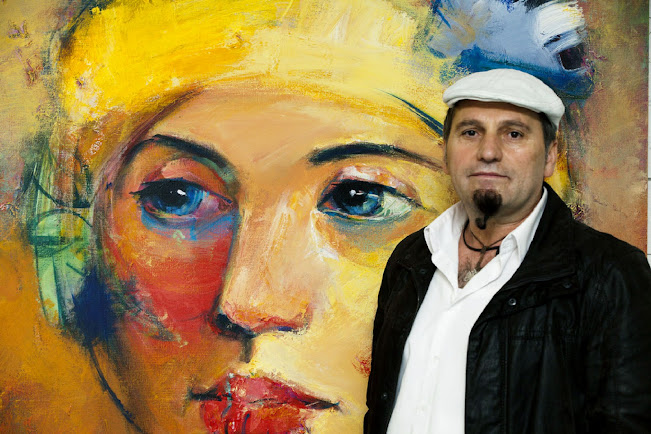






.jpg)

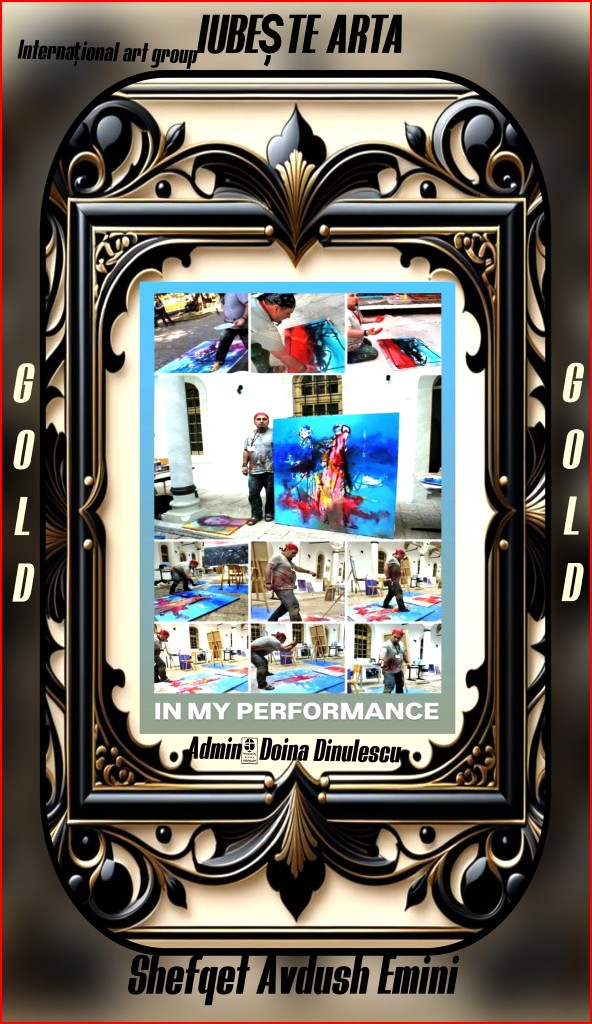








































.jpg)







.jpg)





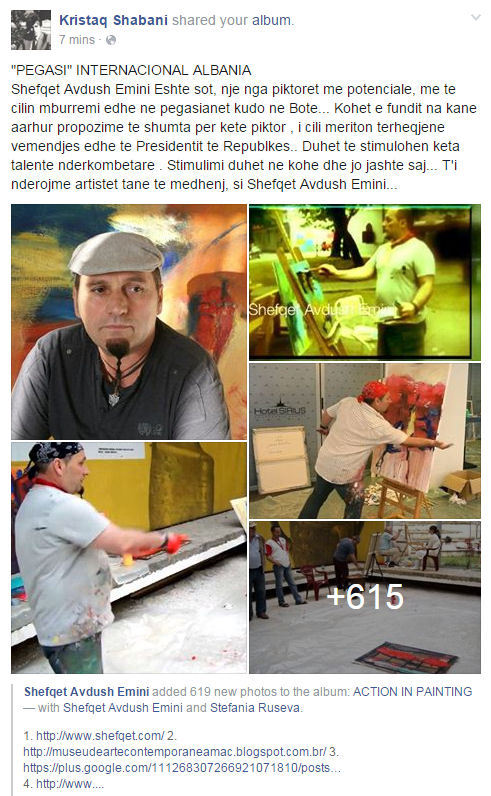







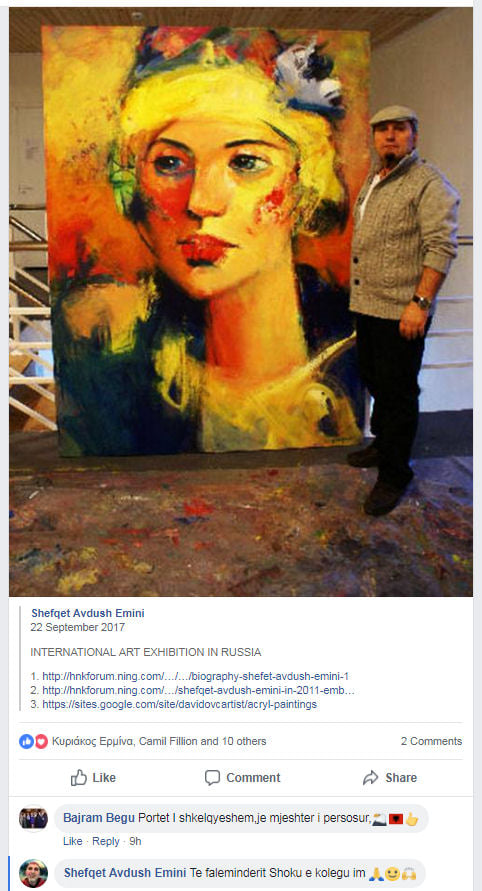



.png)












.png)


.jpg)

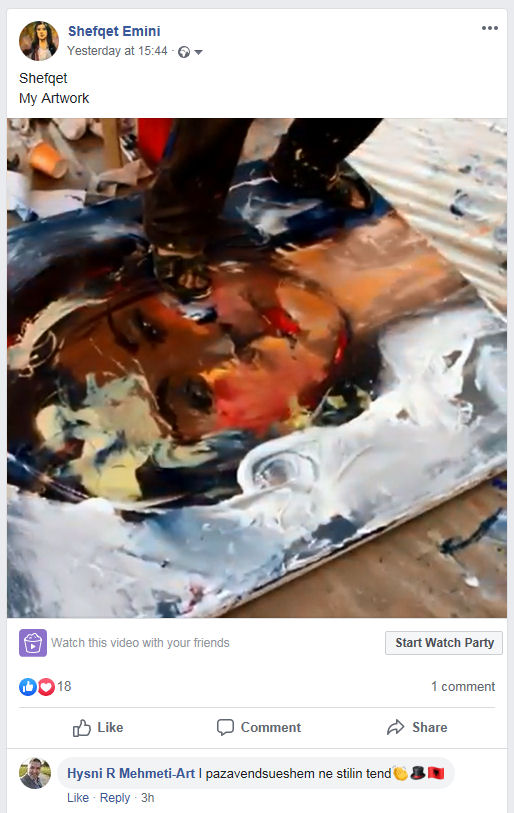

.jpg)
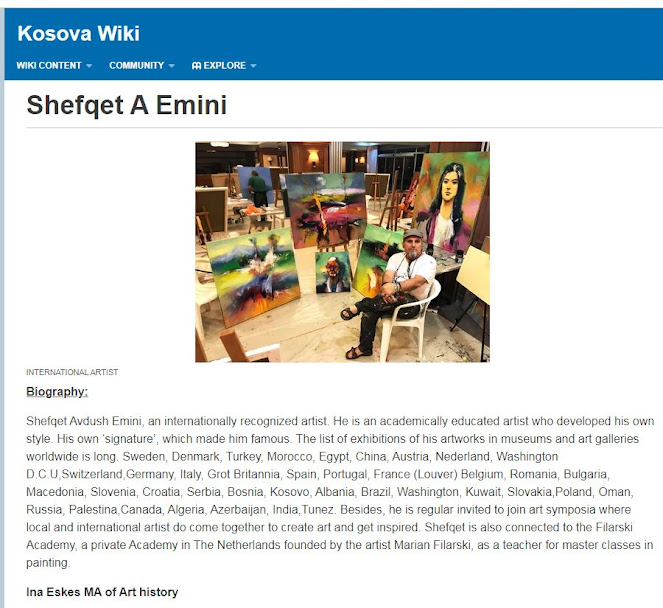

.JPG)



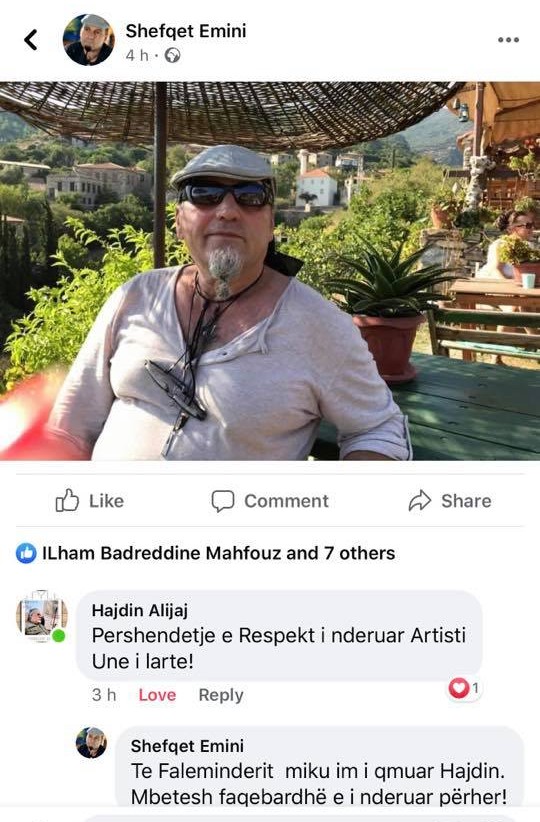




























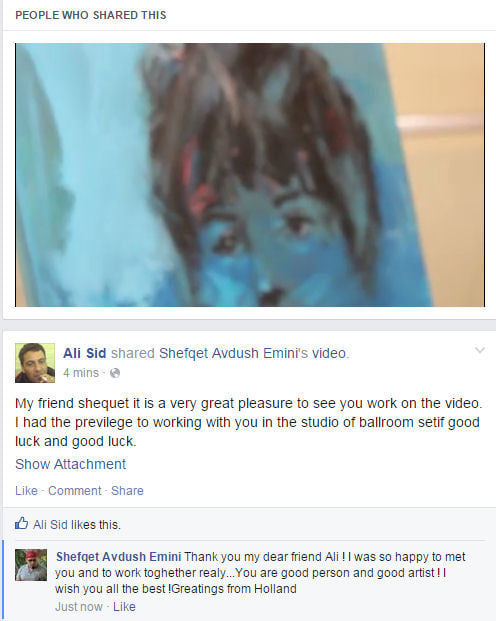




.jpg)



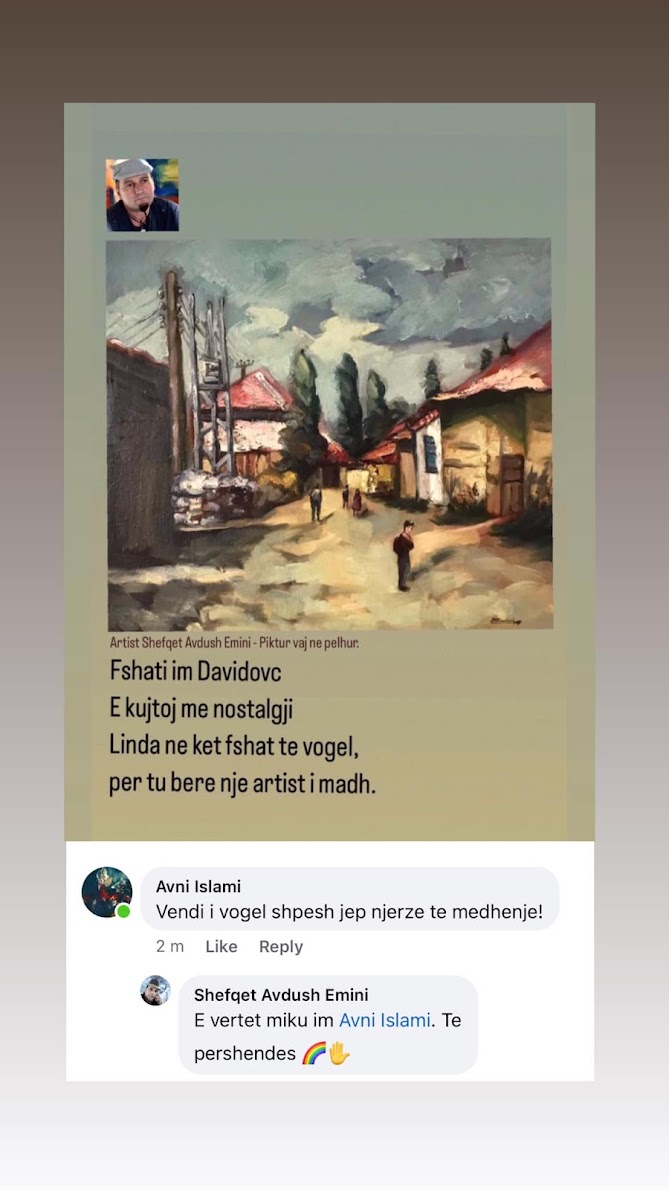




















.jpg)




.jpg?profile=RESIZE_710x)







.jpg?profile=RESIZE_710x)

















.png?profile=RESIZE_710x)









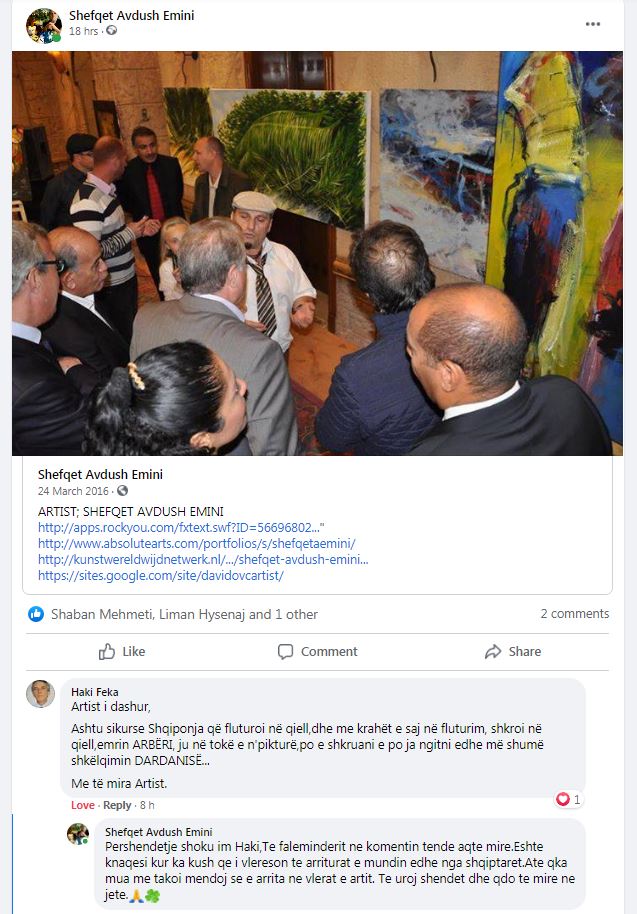

.png?profile=RESIZE_710x)


.jpg?profile=RESIZE_710x)



.jpg?profile=RESIZE_710x)




























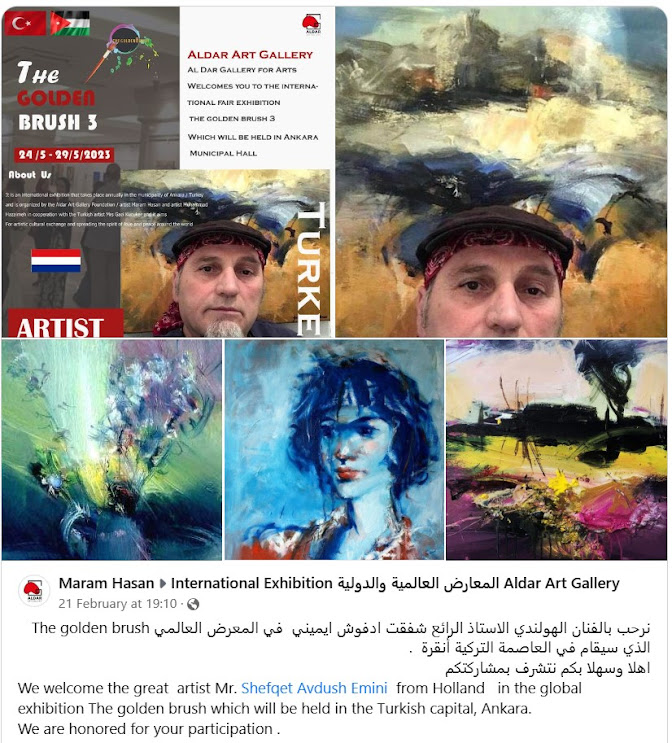


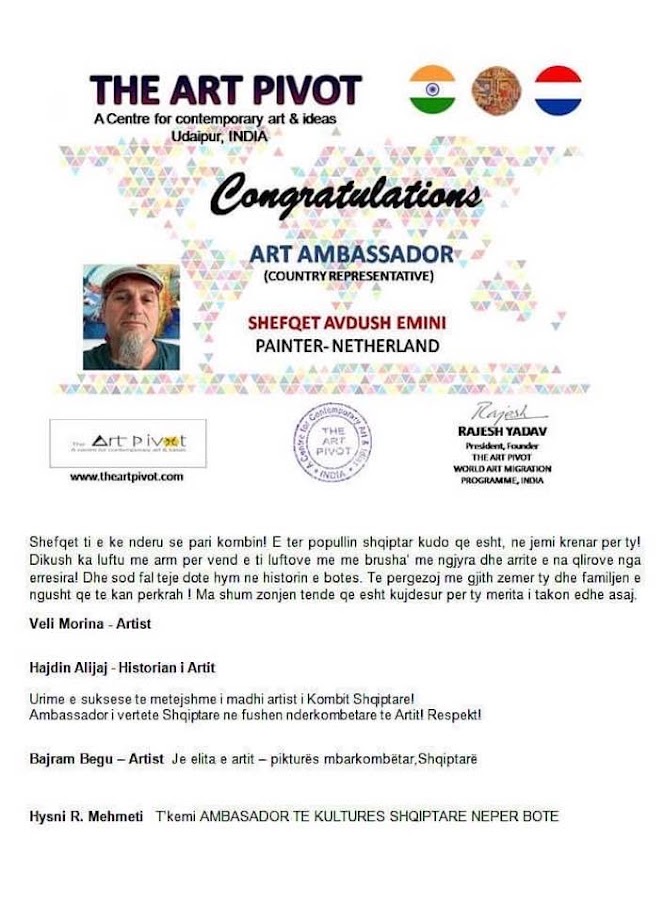


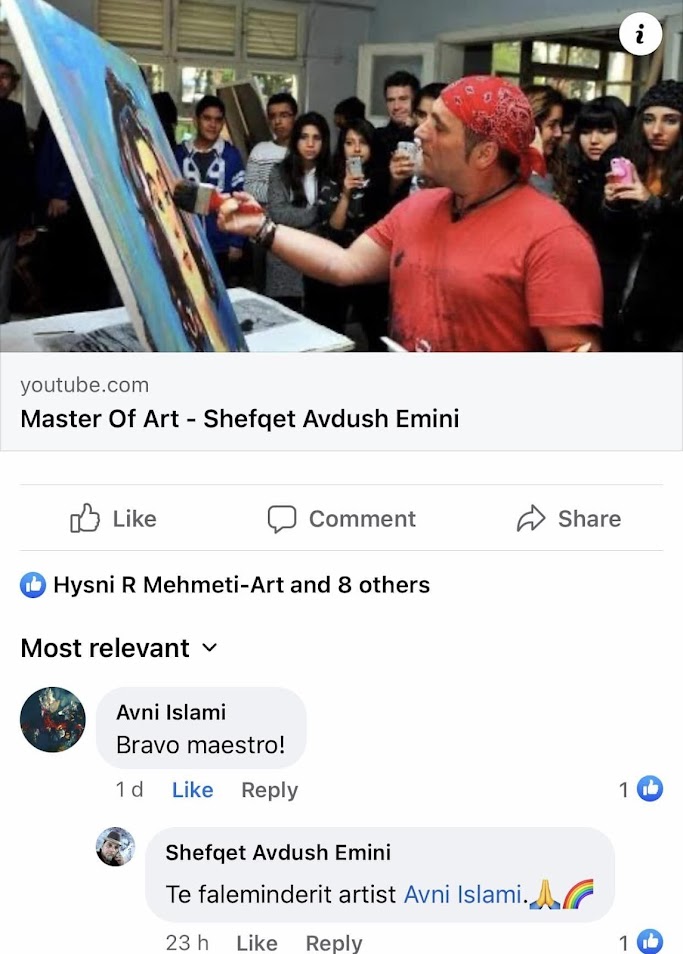


.jpg?profile=RESIZE_710x)














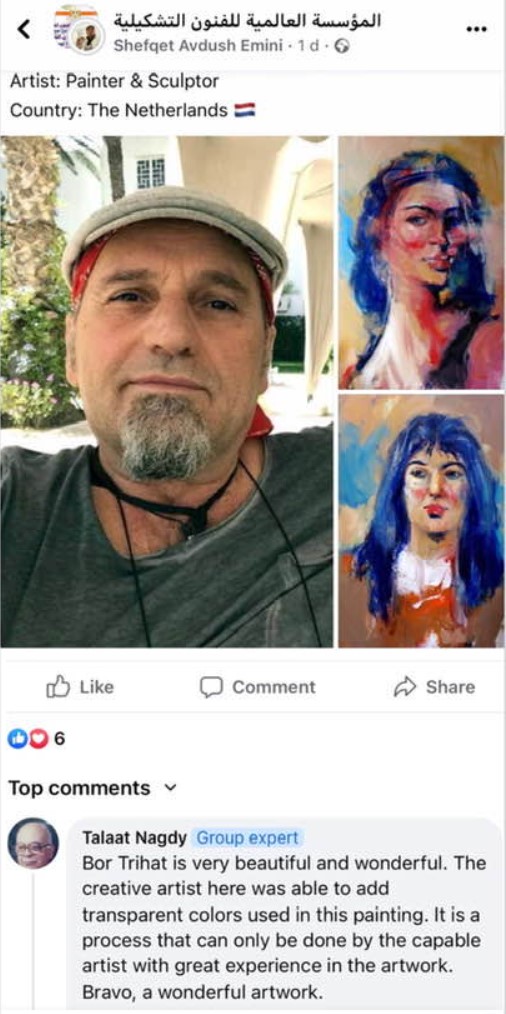








.jpg?profile=RESIZE_710x)






.jpg?profile=RESIZE_710x)

.jpg?profile=RESIZE_710x)
.jpg?profile=RESIZE_710x)

__475__.jpg?profile=RESIZE_710x)
__591__.jpg?profile=RESIZE_710x)
__246__.jpg?profile=RESIZE_710x)


No comments:
Post a Comment